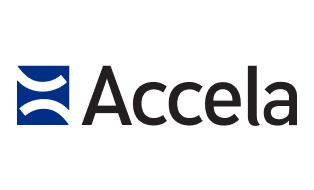By now, most of us are aware that President Biden recently signed into law the American Rescue Plan (ARP). This bill includes a spending package of $1.9 trillion for public health, labor benefits, stimulus to households, housing provisions, unemployment assistance, education, transportation, vaccine distribution, and many other areas.
This historic aid package builds on the CARES and Coronavirus Relief Funds (CRF) Acts of March 2020 and the Supplemental Appropriations Act of December of 2020 to give the country the “booster shot” needed to help residents and ensure the economy stays healthy as we progress through the final phases of the pandemic.
Impact on State and Local Governments
The ARP bill includes funding directed to regional governments to help provide services that may have been cut, due to the impact of the pandemic on taxation revenues, and the budgets for these agencies. This component of the bill is called the Coronavirus Local Fiscal Recovery Fund, and it sends $350 billion to states, municipalities, counties, tribes, and territories in the US. The specific breakdown includes $195 billion for states, $130 billion for local governments, and $25 billion for territories and tribal areas.
The spend areas are specific in some areas, including the following:
- Unemployment modernization – $2.0B
- K-12 – $128.5B
- Higher Education – $39.6B
- E-rate connectivity – $7.6B
- State-based health insurance marketplace modernization – $20.0B
- COVID-19 testing – $46.0B
- Vaccine distribution and communication – $7.5B
- Public health workforce – $7.7B
- Federal transportation admin grants – $30.0B
- Airport relief – $8.0B
This funding plan is intended to be released in two allotments, with the first half expected within 60 days of bill signing, and the second half to be distributed 12 months after. But, as we found with the previous spend packages, there is likely to be more time before some of the funds are dispersed to state and local governments. And at this time, there is also a lack of full detail on where the money is going and what, exactly, it can be spent on.
We do know that for municipalities with more than 50K residents, funds are expected to be made available directly by the U.S. Treasury, and for municipalities with less than 50K residents, states are required to suballocate funding according to a per-capita formula. Also, the bill includes that if states fail to suballocate funds to small cities entitled under the Act, they will be penalized by the U.S. Treasury department, and those funds will be clawed back. The Act is very clear that states must distribute these funds to have the needed effect on recovery.
One of the great aspects of this bill is the timing. With the Coronavirus Relief Fund passed in March 2020, the deadline of spending those funds by December 2020 made it hard for agencies to use their allotment for larger and lengthier projects. Some of the agencies we worked with, felt that between the evaluation period, contracting, and then implementation, their projects would go beyond the deadline and would require additional funding. The extension to December 2021 as a result of the Consolidated Appropriations Act for remaining CRF funds helped but would have provided much more cushion and planning time if it had been built into the bill from the beginning.
With the new ARP, the plan has the funds distributed after the approval of a project or spend proposal, with the deadline for spending the funds being December 31st, 2024. This will give agencies a good amount of breathing room for planning, execution, and paying for qualified ARP projects.
Impact on Citizen Services
When the COVID-19 pandemic arrived in March of 2020, it forced agency employees to start working from their homes and residents could no longer conduct their government business in agency offices. It became painfully clear that agencies needed to find a way to provide all critical services, such as licensing and permitting, in a touchless fashion. This meant online and digitally.
Most agencies had been progressing through their digital transformations over time, removing paper and manual processes from their operations, but those who were further along had a much easier time than the laggards. Some of our agency customers, further ahead in their transformations, claimed they “didn’t skip a beat” in this department, and one processed a record number of permits in March of 2020—all online, right when the pandemic hit.
The CARES Act was the broad relief package, and the Coronavirus Relief Fund (CRF) was the subcomponent of CARES which included $150B of federal funding for state and local agencies for the advancement of citizen services, including bringing those services online. Accela has worked with several agencies who were successful in utilizing CRF funds for initiatives such as virtual inspections and citizen access and service delivery, ensuring our customers could maintain high levels of services even during the stay-at-home mandates.
ARP Funding for Service Delivery
Now the question on everyone’s mind is if the ARP funding should be used to continue work to bring citizen services online. That answer is yes.
A provision in the ARP’s allowable usage of funds for state and local governments indicates the funds can be used for “the provision of government services to the extent of the reduction of tax revenues due to the public health emergency.” This is the acknowledgement of the reduction in revenues from online, property, or income taxes due to the economic impact of the pandemic, but also the need to ensure high levels of citizen services, especially those during mandates and continued precautions. Simply put, the bill allows spending to “replace lost revenues” due to the impact of the pandemic, and that spending can be for technology to extend and expand online service delivery.
The Opportunity for Agencies
Providing high quality and convenient ways for residents and business owners to apply for services, pay fees, check status, submit documents and drawings – and receive the benefits of those services all without having to visit an office or pick up a phone – is a clear win for both citizens and agencies.
ARP provides a new opportunity for agencies to fuel their progress to more digital services, even when squeezed by the opposing forces of increasing citizen expectations on one side, and decreased budgets on the other. This can be pursued in three ways:
- Through the ARP funding as described above
- Possible remaining Coronavirus Relief Funds which might be available in your jurisdiction for IT projects which support online service delivery
- Utilize budgets slated for areas now covered by ARP and are no longer needing to be funded locally. ARP can potentially free up monies for IT expenditures to enhance service delivery.
Federal actions such as ARP and CRF funding for state and local governments are a shot in the arm to help regional agencies continue to focus on their digital transformations, even in light of significant budget shortfalls.
Next Steps
Our research shows the way funds for both programs mentioned are allocated and distributed can be significantly different across states and jurisdictions. We encourage our customers at all levels of government to investigate and pursue funds through their finance and procurement organizations and cross-jurisdictional contacts.
This process may be a bit complicated and time consuming, but worth the effort in the long run. We have customers who successfully used CRF funds for service delivery initiatives and were able to do more for their citizens because of it. The money is there, so let us work together to put it to good use for your communities.
Helpful Links
Accela’s COVID Solutions: https://www.accela.com/solutions/covid-19/
National League of Cities: Everything You Wanted to Know About COVID Relief
Government Technology: Stimulus Package Means Billions for State and Local Tech




